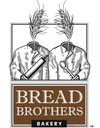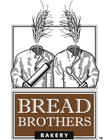Bread Baking Basics, pt. 3
This is part three of Bread Baking Basics! If you've read the first two chapters, we're glad you're here. If you haven't, we're still glad you're here, but we recommend checking out part one and part two first. Today we'll talk about the processes of rising and kneading, discover some of the science behind kneading, and figure out how no-knead bread can exist.
Rising and Kneading
Remember when we said that bread can be as simple as mix-rise-bake? This is still true, but most loaves actually go through a five step process: mix-rise-knead-rise-bake. We'll explain the basics of this process and share everything you need to know to get started.
Mix and rise haven't changed. You'll always need to mix your ingredients together. We've also talked about how the yeast then consumes the sugar, produces carbon dioxide, and makes the dough rise. Ironically, those gas bubbles created by the yeast physically separate it from its food source. When the yeast and sugar separate, the rising stops.
At this point, the dough is typically pushed back (also referred to as “punched down”) and kneaded. This reunites the yeast and the sugar. The bread will then rise again, much like it did the first time. While this may seem like an unnecessary step at first, allowing the dough to rise a second time has a large impact on the finished product. An unkneaded, single-risen loaf will usually be more dense, while dough that rises twice will usually yield a loaf that is lighter and fluffier. The flavor also changes slightly over the course of the second rise. While these characteristics ultimately come down to personal preference, most breads that we enjoy have typically been kneaded and allowed to rise twice.
Science: What You Knead to Know
The second reason we knead dough has a bit of science involved. Wheat contains two kinds of protein called gliadin and glutenin, which are evenly dispersed throughout the flour. As the dough is hydrated and mixed, these proteins begin to come in contact with each other and form long chains of amino acids. These amino acid chains are what allow the bread to develop its structure and texture.
The more the dough is moved around, the more the proteins can meet up and create those chains. To better visualize this, imagine that your dough is filled with little dots of red and blue paint. A quick stir would mix the colors a little bit,, but you'd have to get pretty hands-on with the dough if you wanted most of that red and blue to mix and become purple.
In that analogy, the red and blue paint represent gliadin and glutenin, and the purple represents the amino acid chains formed when the proteins mix together. If you don't have enough “purple”, your bread will lack structure and crumble apart after you bake it. If you ever come across the phrase “developing the gluten” or “strengthening the gluten”, it refers to this process of developing the amino acid chains through kneading.
It's also worth noting that rising and kneading can both be overdone. Leaving your bread to rise for too long will create massive air pockets that prevent the amino acid chains from locking in a solid internal structure. The resulting loaf will be very crumbly and barely hold a shape when sliced, if at all. Too much kneading will overdo the formation of amino acid chains and the resulting loaf will be overly tough and dense.
No-Knead Bread
That's almost everything for today, but there's one more thing said we'd address: no-knead bread. This is an at-home baking sensation that seems to be taking the bread baking world by storm! Despite what you just learned about kneading, no-knead is a viable way of making bread, and here's how (and why) it works.
As we've discussed, bread gets its structure as the proteins in the flour join together when the dough is physically moved around. No-knead bread is made from a very wet dough that is allowed to rise for an extended period of time - often 5 to 10 times longer than a traditional loaf! The extra liquid in the dough allows the proteins to move around on their own, and the extra long rising time gives the proteins a chance to get together and form all the amino acid chains needed. This process perhaps most fully embodies the idea of mix-rise-bake, without additional steps along the way.
There it is! It may seem like a lot of information at first, but remember the basics - mix, rise, bake - and you won't get lost.





Leave a comment